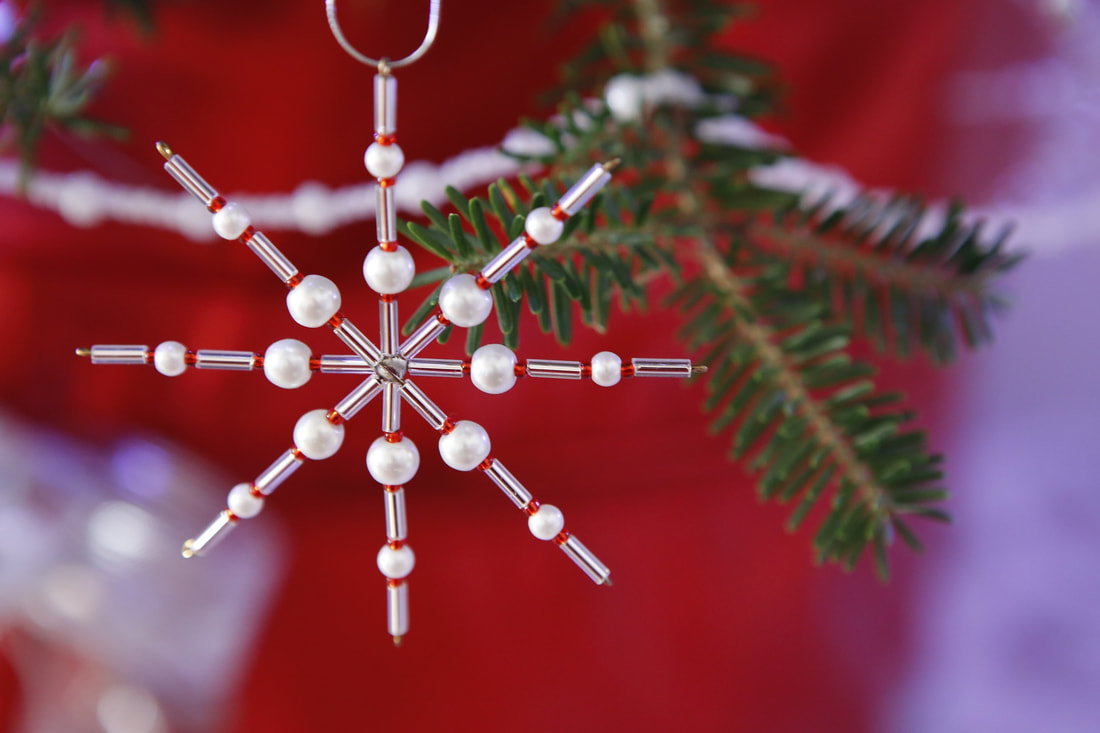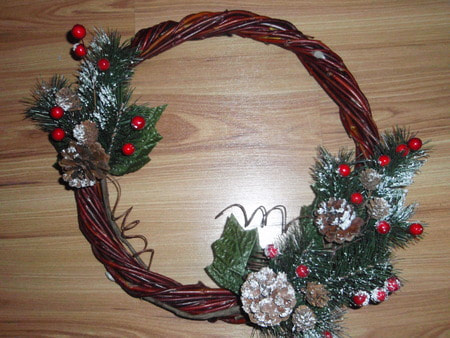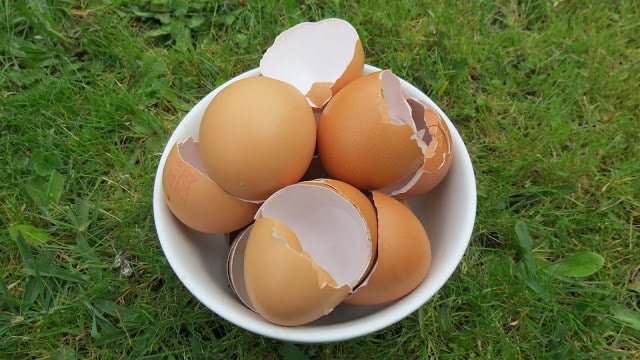|
You can make really pretty and unique baubles for your Christmas tree with just sewing thread, paperclips and two or three different, recycled gaudy necklaces made of large beads. Just string one large bead with two, three or five large ones and use a paperclip to hang them on the Christmas tree. You'll find a wonderful assortment of necklaces at any op shop for just $1 or $2 each and you'll get a lot of ornaments from one necklace.
0 Comments
Willow wreaths are so easy to make and they look lovely, either as they are or decorated. I use small willow wreaths to decorate our Christmas tree. If you want to use them for the same thing, you need to make them now so they have time to dry.
To make a small willow wreath, approximately 5cm in diameter you need one long or two short willow strands. Step 1. Strip the leaves from the strands. Step 2. Take one strand and twist it into a small circle. Weave one end around the circle to secure. Step 3. Take the other end and weave it in and out of the circle until you reach the end. Step 4. Tuck the end into the weaving to secure. Step 5. Lay the wreaths on several thicknesses of newspaper and place them in a warm, dry spot (in front of a sunny window is ideal). Turn the wreaths every day or so. Leave them for a month until they have dried. To decorate use craft paints to spray them gold, silver or red. Use a hot glue gun to stick berries, flowers, bows or other embellishments. Cut a 10cm length of narrow ribbon. Fold in half and glue raw edges to the back of the wreath. Let the glue dry then hang by the ribbon. Where to find willow: Weeping willows grow all over the place. They were once very common but have fallen out of favour due to their creeping and invasive roots. You'll still find them in parks and along creeks and waterways, or even along the side of a country road. I make Wayne stop at the picnic area between Goulbourn and Yass every time we are coming home from Sydney so I can collect a few more willow strands (the willows are on the southbound side of the freeway, which is why we stop on the way home). If the willow is on private property ask permission before taking just the number of strands you need to make your wreath. To most people an egg shell would be rubbish, tossed in the bin and sent to landfill. Some keen gardeners may compost them or use them as snail repellent. Folk with chooks may grind them and add them to their chook's food as shell grit. But most people just toss them.
I have a little dish that sits on the sink and whenever we use an egg, the shell gets rinsed in cold water and then put into the dish. When I need egg shell for something, it's right there, ready and waiting to be used. Egg shells are surprisingly useful. Here's a list of 10 ways I use egg shells around our home. 1. Use egg shells to whiten and soften linen. Soak greying linens in boiling water with the juice of a lemon and two or three ground egg shells added. Let them soak overnight, then rinse and hang in the sun to dry. The linens will be white and soft, no nasty chemical whiteners or softeners needed. 2. In the garden to keep snails and slugs off seedlings. Just crush the egg shell and sprinkle it around the tiny plants. Snails and slugs won't travel over the sharp edges so your plants will be safe - from those predators at least. 3. Add them to chook food. Egg shells are a great source of calcium and grit, two things hens need to produce nice health eggs. Wash the egg shells and when you have a few grind them, either in a blender, with a stick blender or with a mortar and pestle and add it to the chook food. 4. Boil the shells in your coffee. At home we have a coffee maker but when we're camping we use an old fashioned stove top percolator. Adding egg shells to the percolator with the coffee grounds takes away the bitterness than can happen when coffee is boiled accidentally. 5. Use them to feed tomato plants. Calcium rich, crushed egg shell is a good source of this mineral for tomato plants. Tomatoes need calcium to prevent blossom end rot, a common tomato problem. Put a couple of egg shells in the hole before you plant your tomato to give it a boost. Then through the growing season grind egg shells, sprinkle them around the base of the tomato and water in. 6. As tiny seedling starters. Rinse out the egg shells, poke a couple of tiny drainage holes in the bottoms and fill with potting mix. Plant your seeds and when they are ready to be transplanted, gently squeeze the egg shell to crack it and then plant it intact in the ground. 7. Compost them. Nothing more needs to be said. 8. You don't compost? No problem, crush them, sprinkle over the soil and then lightly rake them in. 9. Turn them into ornaments. Rinse them well and let them dry. Then let your creative streak go to town. Paint them, add glitter and sequins, fill them with cotton wool, add little tiny ornaments, cover them with braid, glue on a ribbon hanger - use your imagination! 10. Add them to the bird feeder. Crush them up and mix in with the bird seed to give the wild birds that visit your garden a treat. So how do you use egg shells? Share your idea in the comments below Take that old shower caddy and put it to good use as a hanging herb or succulent garden.
After our bathroom renovation I had a spare shower caddy, just taking up space and doing nothing useful. I thought about hanging it over the tap in the backyard to hold soap for handwashing then saw a picture of one being used as a hanging basket. You will need: 1 hanging shower caddy Potting mix Herb seedlings Coconut fibre Step 1. Line the basket/s of your shower caddy with coconut fibre. Make sure it is at least 2cm thick and covers the entire basket area. It has to hold potting mix and seedlings. Step 2. Fill the baskets with potting mix and water. Plant your seedlings. Step 3. Hang your basket against a wall, off a verandah railing or from the fence. You'll be growing your own fresh herbs and repurposing something that would otherwise have gone to landfill. Oh, you'll save money on a hanging basket or pot too. |
Archives
April 2020
Categories
All
|



 RSS Feed
RSS Feed